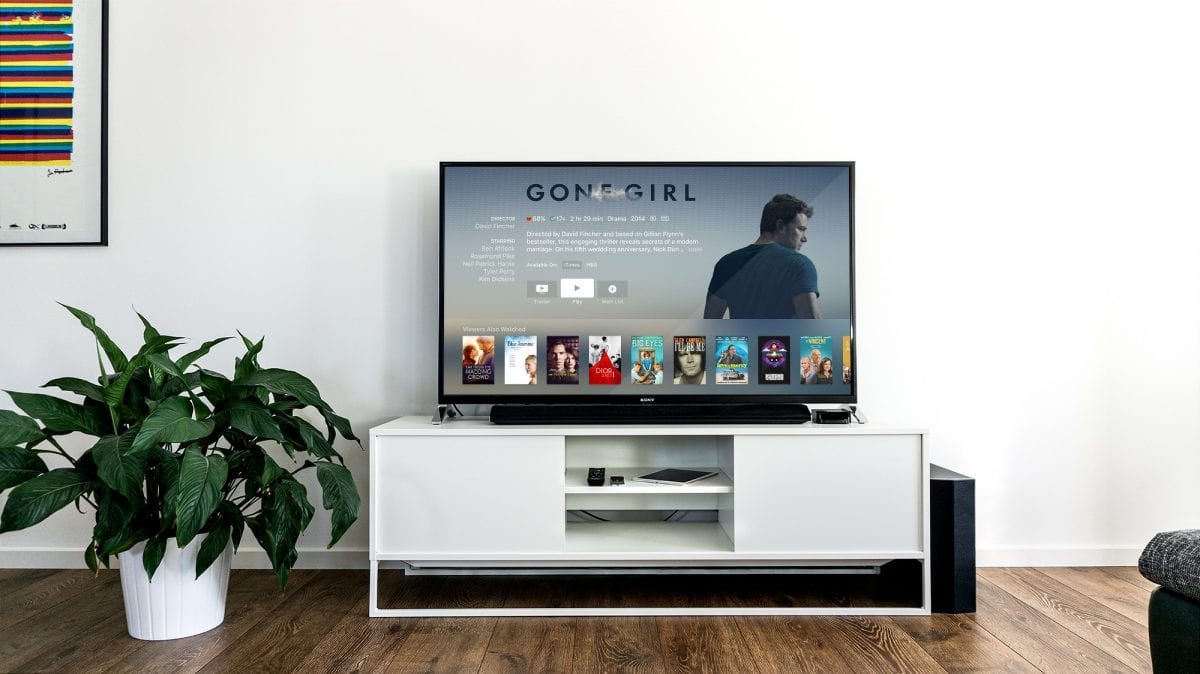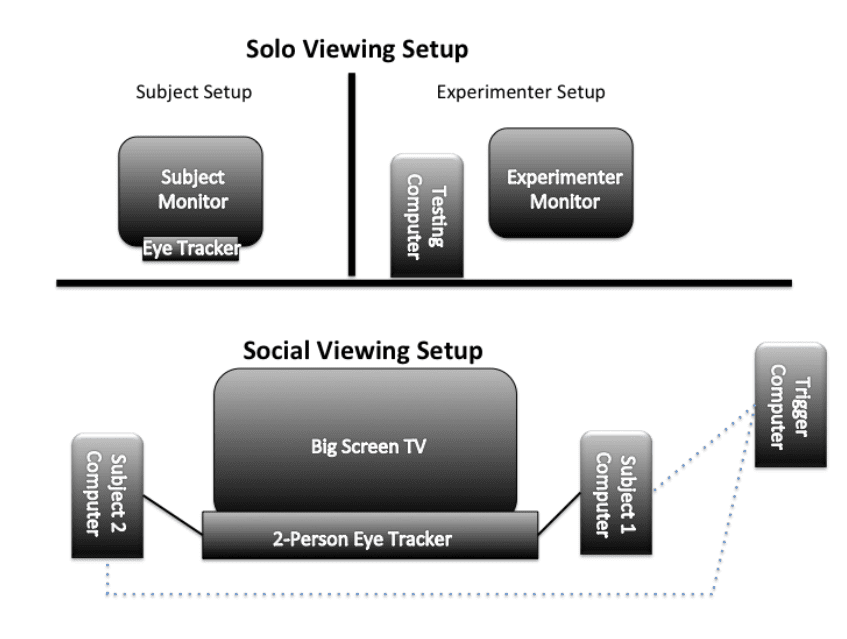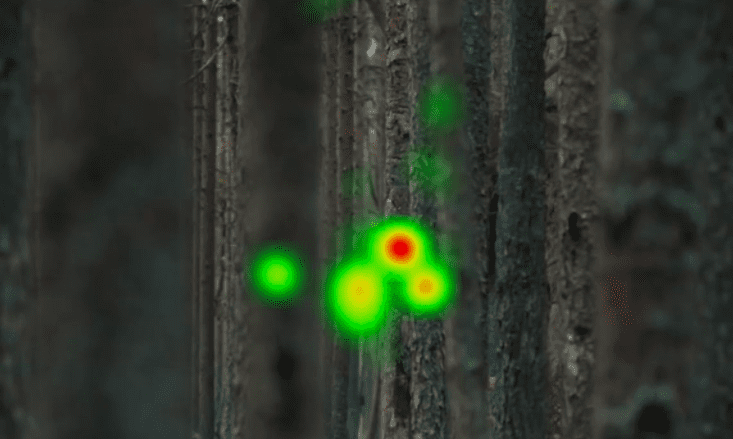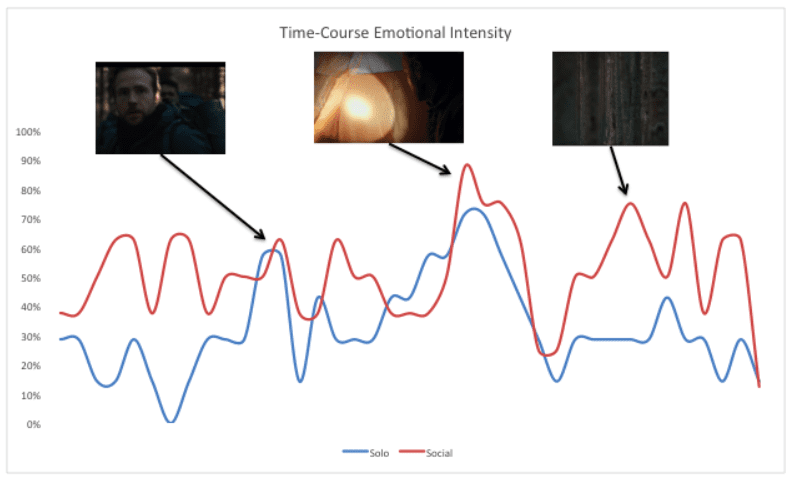Across different fields, researchers are interested in better-understanding viewer engagement to video content such as advertisements (Heath, 2009), television shows, and movie trailers.
Previous research has focused on a number of factors that best engage viewer attention such as narratives (Busselle & Bilandzic, 2009), key visual components, and structural elements of video stimuli (Smith & Gevins, 2009). More recent research has even investigated the influence of environmental factors on viewer attention and engagement.
Specifically, a 2016 study from the Council for Research Excellence, conducted by Nielsen Consumer Neuroscience, assessed how multiple factors in the viewing environment can influence viewer attention. Three main factors were found to influence viewing behavior: the general viewing environment, the impact of a second screen, and co-viewing. While subjects were distracted about 48% of the time by either a second screen or other environmental factors, the presence of a co-viewer actually increased subject emotional response to TV ads by more than 25%.

These findings suggest that watching TV with someone else in the room can greatly influence viewing behavior. This begs the question of whether social viewing contexts evoke higher levels of engagement and different patterns of attention than solo viewing contexts.
To test this, we conducted a quick study to assess emotional engagement across solo and social environmental contexts. We had subjects participate in two separate sessions: one in which they viewed a horror movie trailer by themselves (solo context), and another in which they watched the same trailer with a peer (social context).
The engagement was assessed using GSR as a measure of emotional intensity and Facial Expressions as a measure of emotional valence. Visual attention was assessed using screen-based eye tracking.
Lab Setup for Testing
The lab setup is outlined below for each viewing context. Note that in this test, all subjects viewed the trailer alone and with a peer. Subjects had not seen the preview before nor heard of the movie. In the solo and social contexts, subjects were asked to complete an eye tracking calibration test, then they were told that they would be watching a movie preview.
The solo context used a standardized remote eye tracking setup as outlined in the figure below. The social context used a 2-person eye tracking setup using the EyeTech VT3XL eye tracker, as outlined in the images and graphics below. This allowed for simultaneous viewing of the same video on one monitor by two subjects.

As outlined in the graphic above, the solo viewing setup requires that the subject sits in front of a computer monitor with a screen-based eye tracker and other biosensors, with the experimenter controlling the session and monitoring from behind a partition or in a separate room.
The social viewing setup, however, is a bit more complex. In this setup, while the VT3 XL eye tracker allows for simultaneous eye tracking data collection from two subjects at a time, each subject setup requires a separate computer to control the session. These computers are each connected to the eye tracker. Each computer is also connected via HDMI to the big screen TV for stimulus display.
Finally, a third trigger computer is required to start the stimulus for both subject computers at the same time. While this setup is complex, it allows for peer viewing of content in relatively non-invasive and realistic settings (i.e. a living room).
Testing Outcomes
So, what did we find out? Note that the stimulus was a horror movie preview that none of the subjects had seen before. The purpose of using this stimulus was mainly to test whether visual attention and emotional engagement differ in the two contexts, but also to see if jump scares during the preview would elicit an expected response (high arousal, negative valence).
Across most of the preview, visual attention was similar in both social and solo viewing contexts. However, as seen in the heatmaps below, subjects attended to key focal points (in this case, the monster’s “hand” showing up in the middle of a forest, startling the main character) more closely in the solo context and had slightly more distributed visual attention in the social context.


Regarding emotional engagement, emotional intensity was similar for both solo and social settings such that subjects showed similarly high responses during key “jump scare” moments in the preview, as outlined below. However, overall emotional intensity was higher in the social viewing context than in the solo-viewing context.

When it comes to emotional valence, while the expected expressed facial emotion of fear was low, facial expressions associated with a fear response such as eye widen and brow raise did stand out across both solo and social viewing sessions. Interestingly, the “engagement” measure was higher in the social group than in the solo group, suggesting higher levels of expressed facial emotion when viewing content with a peer.
While further testing is required to better establish differences in solo versus social viewing contexts, the findings from our quick overview suggest that social viewing does indeed impact outcomes, such that viewers show higher levels of emotional arousal during key moments of the video in a social context than they do in a solo context. I hope you’ve enjoyed reading about video content testing in different environments!
To get a primer on human behavior research, download our free and comprehensive guide below. For more information about the features and functionalities for single and 2-person testing in iMotions, check out our products page or contact us today!
Free 52-page Human Behavior Guide
For Beginners and Intermediates
- Get accessible and comprehensive walkthrough
- Valuable human behavior research insight
- Learn how to take your research to the next level

References
[1] Smith, M. E., & Gevins, A. (2009) Attention and Brain Activity While Watching Television: Components of Viewer Engagement, Media Psychology, 6:3, 285-305, DOI: 10.1207/s1532785xmep0603_3
[2] Busselle, R. & Bilandzic, H. (2009) Measuring Narrative Engagement, Media Psychology,12:4, 321-347, DOI: 10.1080/15213260903287259
[3] Heath, R. (2009). Emotional engagement: How television builds big brands at low attention. Journal of advertising research, 49(1), 62-73.










